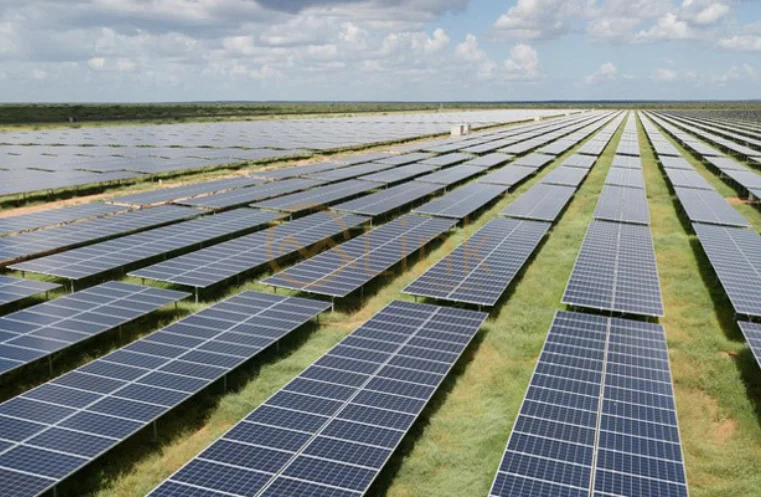Islamabad, Mar 14, 2025: The government has significantly altered its net metering policy, introducing regulations that substantially reduce benefits for new solar panel owners by 63%.
Additionally, the new framework compels consumers to purchase electricity from the national grid at prices over 550% higher than their sale rates.
As per the updated policy, rooftop solar panel users will receive Rs10 per unit for the electricity they supply to the grid but must buy power at the prevailing market rate—currently around Rs65 per unit.
Unlike the previous system, users can no longer offset their imported units with exported ones, creating a significant cost disparity that heavily impacts solar consumers.
For existing rooftop solar panel users, the revised terms will take effect after their current agreements expire, which have a maximum duration of seven years.
The Economic Coordination Committee (ECC) of the Cabinet has formally endorsed this substantial policy change.
New solar panel adopters will also be subject to stricter technical specifications to ensure the installation of high-quality systems and prevent the use of substandard equipment.
Chaired by Finance Minister Muhammad Aurangzeb, the ECC approved amendments to net metering regulations.
The Power Division proposed these crucial policy changes as an additional agenda item, limiting discussions before approval.
The revised regulations eliminate the concept of offsetting solar-generated electricity against units consumed from the grid, with the government arguing that this adjustment aims to ease financial pressure on non-solar consumers.
Following this decision, the buyback rate for solar panel owners has dropped from Rs27 per unit to Rs10 per unit, reducing benefits by 63%.
Read More:
Pakistan, IMF Reach Deal to Cut Tax Target by Rs. 620 Billion
Meanwhile, the national grid will charge electricity at market prices, currently between Rs65 and Rs70 per unit, inclusive of taxes.
The government has defended this policy change by stating that non-solar consumers face an additional 90 paisa per unit burden.
However, concerns remain over the Rs18 per unit in idle capacity charges and the estimated Rs600 billion lost annually due to electricity theft and bill non-recovery.
The pricing model has shifted critically, meaning that the system will now bill imported and exported units separately.
The compensation for exported units will be Rs10 per unit, while imported units will follow peak and off-peak rates with applicable taxes and surcharges.
Consumers currently benefiting from net metering, under valid agreements with NEPRA’s Alternative & Renewable Energy Distributed Generation and Net Metering Regulations 2015, will continue to enjoy existing terms until their agreements expire.
Introduced in 2015 to encourage renewable energy adoption, the net metering system has reportedly disrupted the business models of imported-fuel-based power plants.
The ECC has also revised the capacity limits for distributed generation systems.
The authorities have now restricted the limit to a one-to-one ratio from the previous 1.5 times the sanctioned load, further reducing incentives for solar adoption.
Pakistan’s solar energy sector has expanded rapidly, with rooftop solar capacity rising from 5 MW in 2017 to 4,135 MW by December 2024.
This growth is largely attributed to energy tariff policies shaped under pressure from the International Monetary Fund (IMF) and the World Bank.
As a result, electricity rates have soared to over Rs65 per unit, making power unaffordable for many consumers.
The number of solar net-metering users surged from 226,440 in October 2024 to 283,000 by December 2024.
Installed capacity also grew from 321 MW in 2021 to 4,124 MW in December 2024, highlighting the significant adoption of solar power.
The finance ministry reports that nine major urban centers, mainly affluent areas, contain 80% of net-metering consumers.
Despite Prime Minister Shehbaz Sharif’s efforts to reduce electricity costs, the energy ministry has yet to present an alternative plan that aligns with IMF conditions.
The only viable option currently under consideration is a relief measure of Rs2.5 per unit through fuel price adjustments.
The energy ministry contends that 67% of revenue requirements come from fixed costs, such as capacity payments to power producers and operational expenses for power distribution companies.
Since net-metering users do not significantly contribute to these fixed costs, their increasing numbers are perceived as a strain on the system.
According to the ECC, net metering reduced electricity sales by 3.2 billion units in the last fiscal year, adding a financial burden of Rs101 billion (approximately 90 paisa per unit) on other consumers.
By 2034, sales reductions could reach 18.8 billion units, potentially increasing the burden on grid consumers to Rs545 billion, translating to an additional Rs3.6 per unit in tariffs.
The ECC has also introduced new technical standards for inverters, requiring real-time grid interaction, anti-islanding protection, and remote monitoring
The distribution company will now cap hosting capacity on transformers and feeders based on its studies.
Future bills will receive credits for excess exported electricity, but customers cannot withdraw them as cash. Additionally, the net-metering contract period has been reduced from seven years to five.
These sweeping policy changes mark a fundamental shift in Pakistan’s solar energy landscape, significantly altering the incentives for consumers looking to invest in renewable energy.
